Haoyi Xiu
Advancing ALS Applications with Large-Scale Pre-training: Dataset Development and Downstream Assessment
Jan 09, 2025



Abstract:The pre-training and fine-tuning paradigm has revolutionized satellite remote sensing applications. However, this approach remains largely underexplored for airborne laser scanning (ALS), an important technology for applications such as forest management and urban planning. In this study, we address this gap by constructing a large-scale ALS point cloud dataset and evaluating its impact on downstream applications. Our dataset comprises ALS point clouds collected across the contiguous United States, provided by the United States Geological Survey's 3D Elevation Program. To ensure efficient data collection while capturing diverse land cover and terrain types, we introduce a geospatial sampling method that selects point cloud tiles based on land cover maps and digital elevation models. As a baseline self-supervised learning model, we adopt BEV-MAE, a state-of-the-art masked autoencoder for 3D outdoor point clouds, and pre-train it on the constructed dataset. The pre-trained models are subsequently fine-tuned for downstream tasks, including tree species classification, terrain scene recognition, and point cloud semantic segmentation. Our results show that the pre-trained models significantly outperform their scratch counterparts across all downstream tasks, demonstrating the transferability of the representations learned from the proposed dataset. Furthermore, we observe that scaling the dataset using our geospatial sampling method consistently enhances performance, whereas pre-training on datasets constructed with random sampling fails to achieve similar improvements. These findings highlight the utility of the constructed dataset and the effectiveness of our sampling strategy in the pre-training and fine-tuning paradigm. The source code and pre-trained models will be made publicly available at \url{https://github.com/martianxiu/ALS_pretraining}.
MSECNet: Accurate and Robust Normal Estimation for 3D Point Clouds by Multi-Scale Edge Conditioning
Aug 23, 2023



Abstract:Estimating surface normals from 3D point clouds is critical for various applications, including surface reconstruction and rendering. While existing methods for normal estimation perform well in regions where normals change slowly, they tend to fail where normals vary rapidly. To address this issue, we propose a novel approach called MSECNet, which improves estimation in normal varying regions by treating normal variation modeling as an edge detection problem. MSECNet consists of a backbone network and a multi-scale edge conditioning (MSEC) stream. The MSEC stream achieves robust edge detection through multi-scale feature fusion and adaptive edge detection. The detected edges are then combined with the output of the backbone network using the edge conditioning module to produce edge-aware representations. Extensive experiments show that MSECNet outperforms existing methods on both synthetic (PCPNet) and real-world (SceneNN) datasets while running significantly faster. We also conduct various analyses to investigate the contribution of each component in the MSEC stream. Finally, we demonstrate the effectiveness of our approach in surface reconstruction.
Interpretable Edge Enhancement and Suppression Learning for 3D Point Cloud Segmentation
Sep 20, 2022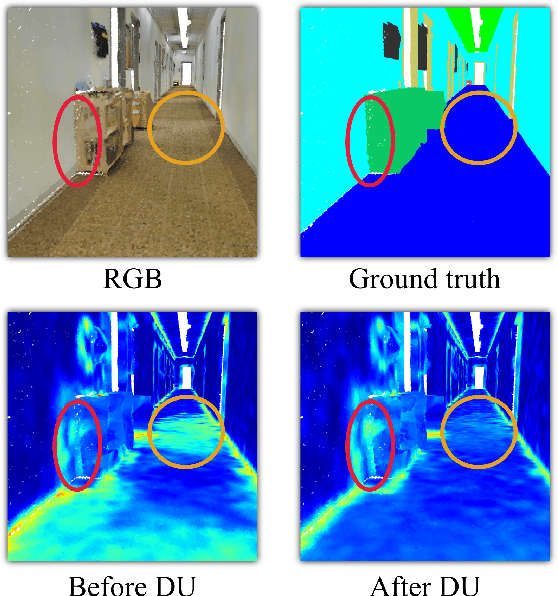
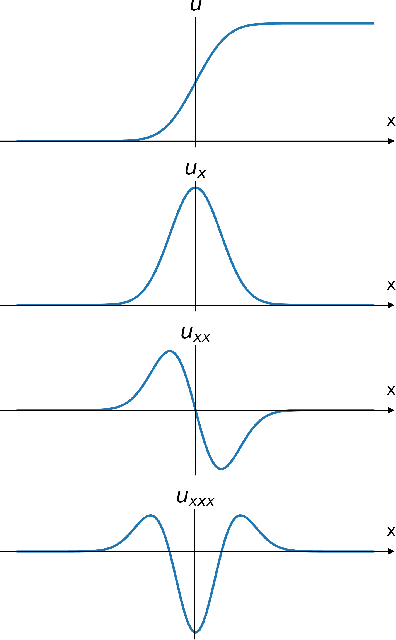
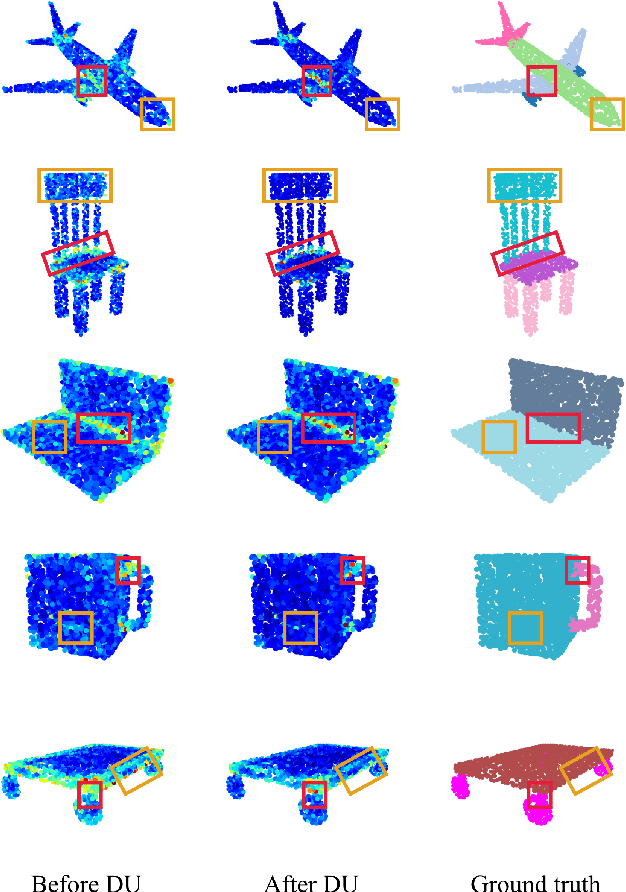
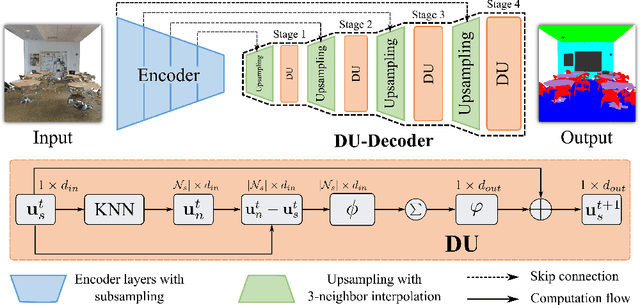
Abstract:3D point clouds can flexibly represent continuous surfaces and can be used for various applications; however, the lack of structural information makes point cloud recognition challenging. Recent edge-aware methods mainly use edge information as an extra feature that describes local structures to facilitate learning. Although these methods show that incorporating edges into the network design is beneficial, they generally lack interpretability, making users wonder how exactly edges help. To shed light on this issue, in this study, we propose the Diffusion Unit (DU) that handles edges in an interpretable manner while providing decent improvement. Our method is interpretable in three ways. First, we theoretically show that DU learns to perform task-beneficial edge enhancement and suppression. Second, we experimentally observe and verify the edge enhancement and suppression behavior. Third, we empirically demonstrate that this behavior contributes to performance improvement. Extensive experiments performed on challenging benchmarks verify the superiority of DU in terms of both interpretability and performance gain. Specifically, our method achieves state-of-the-art performance in object part segmentation using ShapeNet part and scene segmentation using S3DIS. Our source code will be released at https://github.com/martianxiu/DiffusionUnit.
Enhancing Local Geometry Learning for 3D Point Cloud via Decoupling Convolution
Jul 04, 2022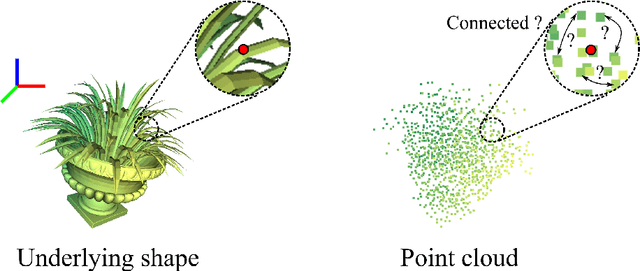
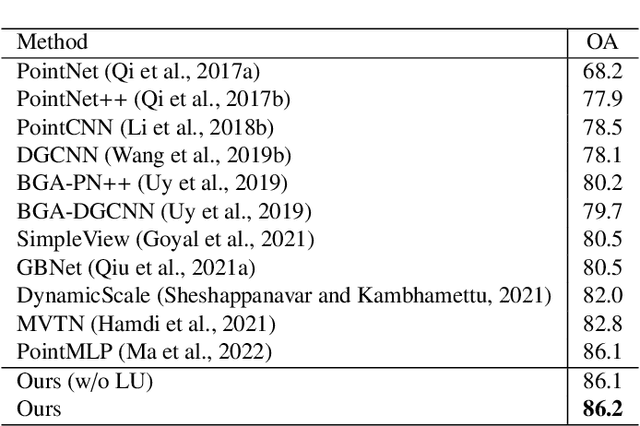

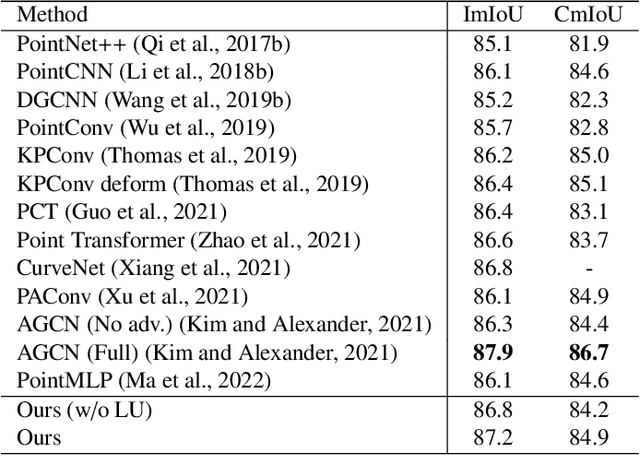
Abstract:Modeling the local surface geometry is challenging in 3D point cloud understanding due to the lack of connectivity information. Most prior works model local geometry using various convolution operations. We observe that the convolution can be equivalently decomposed as a weighted combination of a local and a global component. With this observation, we explicitly decouple these two components so that the local one can be enhanced and facilitate the learning of local surface geometry. Specifically, we propose Laplacian Unit (LU), a simple yet effective architectural unit that can enhance the learning of local geometry. Extensive experiments demonstrate that networks equipped with LUs achieve competitive or superior performance on typical point cloud understanding tasks. Moreover, through establishing connections between the mean curvature flow, a further investigation of LU based on curvatures is made to interpret the adaptive smoothing and sharpening effect of LU. The code will be available.
Enhancing Local Feature Learning Using Diffusion for 3D Point Cloud Understanding
Jul 04, 2022
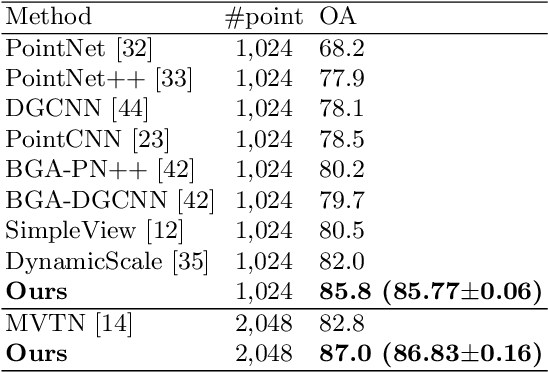
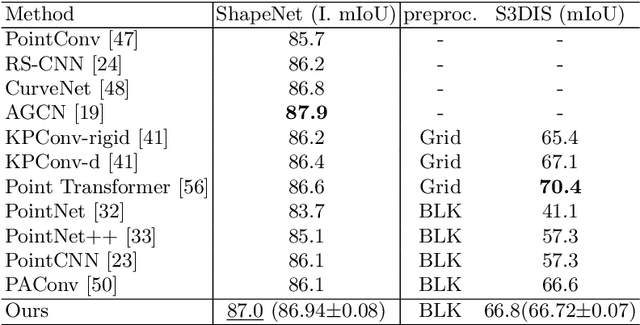

Abstract:Learning point clouds is challenging due to the lack of connectivity information, i.e., edges. Although existing edge-aware methods can improve the performance by modeling edges, how edges contribute to the improvement is unclear. In this study, we propose a method that automatically learns to enhance/suppress edges while keeping the its working mechanism clear. First, we theoretically figure out how edge enhancement/suppression works. Second, we experimentally verify the edge enhancement/suppression behavior. Third, we empirically show that this behavior improves performance. In general, we observe that the proposed method achieves competitive performance in point cloud classification and segmentation tasks.
Enhancing Local Feature Learning for 3D Point Cloud Processing using Unary-Pairwise Attention
Mar 17, 2022

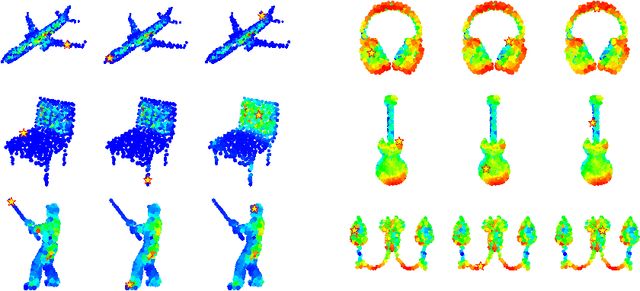
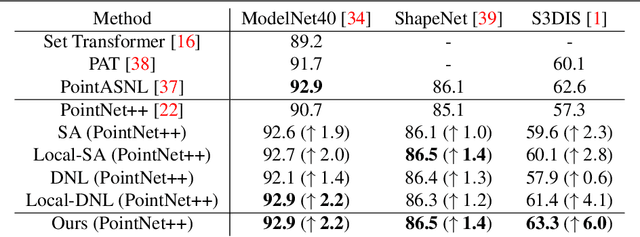
Abstract:We present a simple but effective attention named the unary-pairwise attention (UPA) for modeling the relationship between 3D point clouds. Our idea is motivated by the analysis that the standard self-attention (SA) that operates globally tends to produce almost the same attention maps for different query positions, revealing difficulties for learning query-independent and query-dependent information jointly. Therefore, we reformulate the SA and propose query-independent (Unary) and query-dependent (Pairwise) components to facilitate the learning of both terms. In contrast to the SA, the UPA ensures query dependence via operating locally. Extensive experiments show that the UPA outperforms the SA consistently on various point cloud understanding tasks including shape classification, part segmentation, and scene segmentation. Moreover, simply equipping the popular PointNet++ method with the UPA even outperforms or is on par with the state-of-the-art attention-based approaches. In addition, the UPA systematically boosts the performance of both standard and modern networks when it is integrated into them as a compositional module.
 Add to Chrome
Add to Chrome Add to Firefox
Add to Firefox Add to Edge
Add to Edge